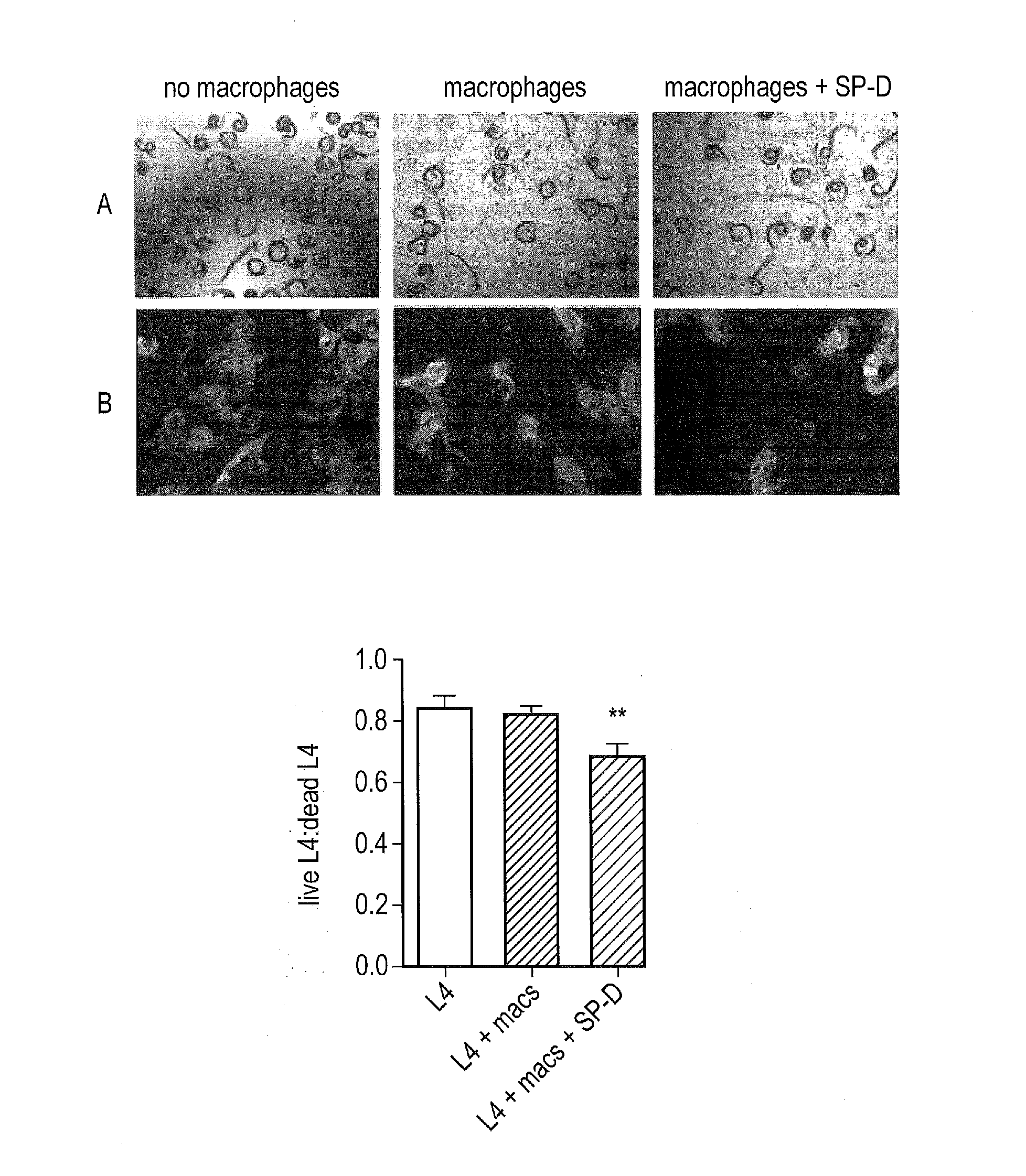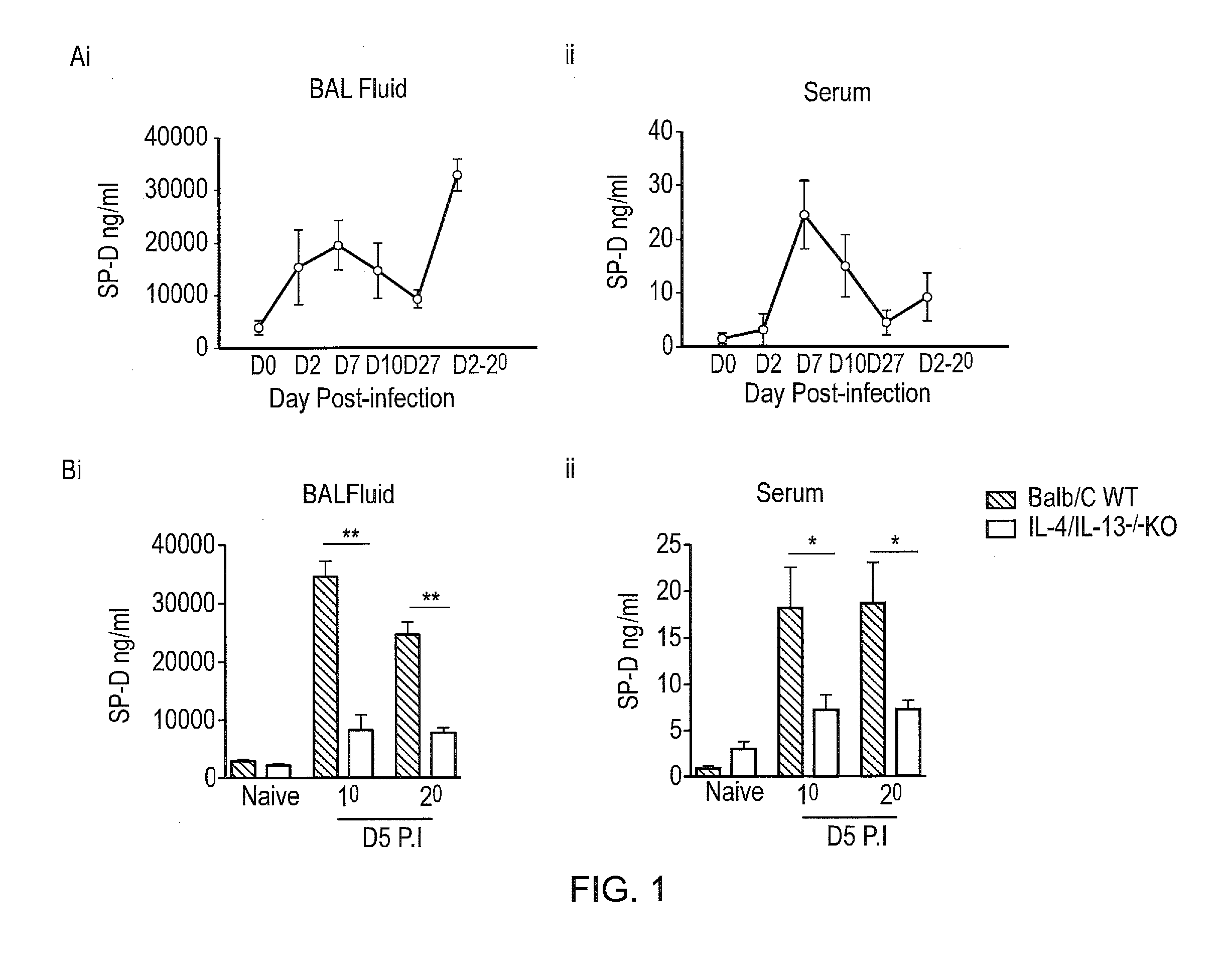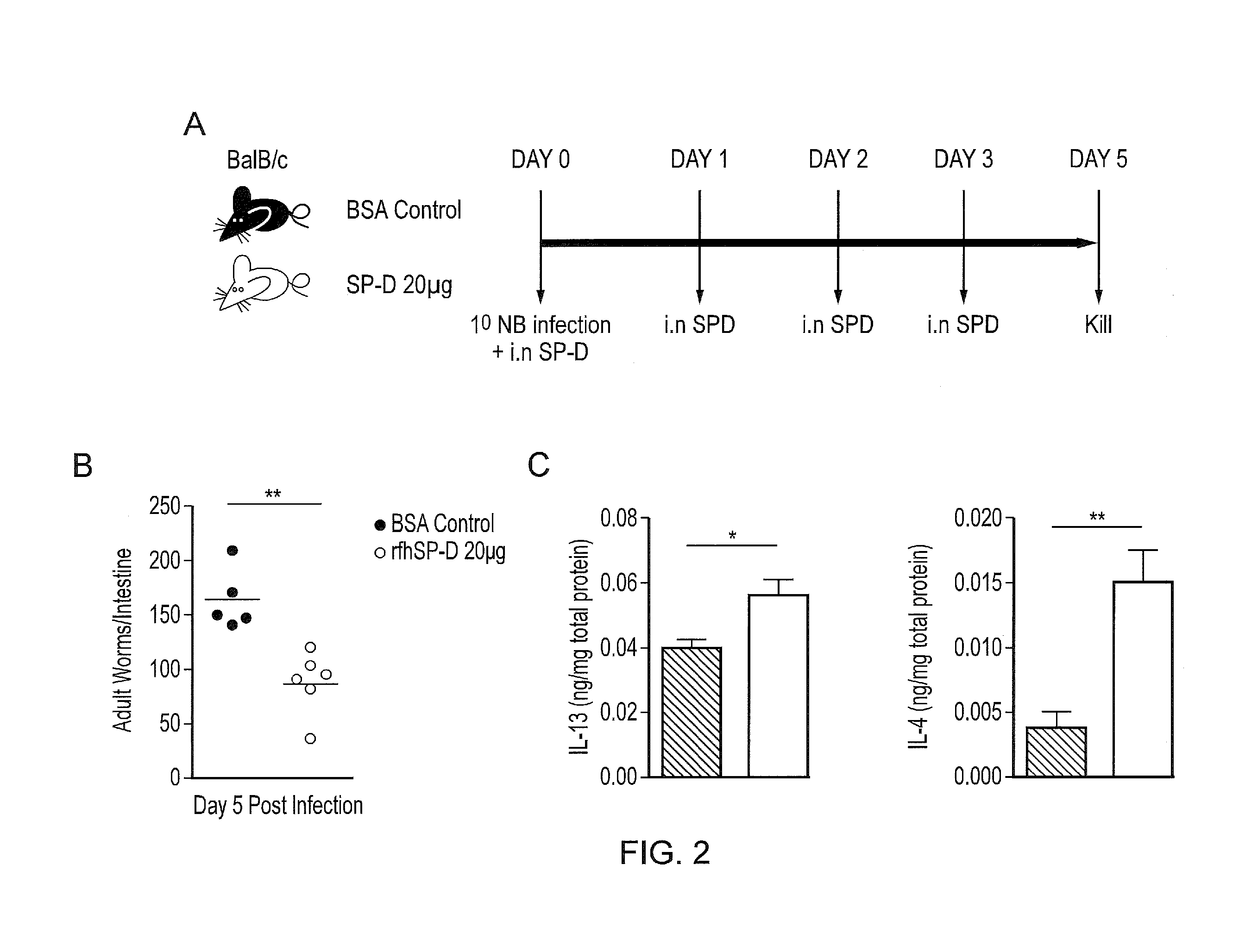Treating Infection
a parasite and infection technology, applied in the field of parasitic nematode infections, can solve the problems of reducing affecting the survival rate of parasites, so as to enhance the alternative activation of alveolar macrophages and reduce the burden of parasites
- Summary
- Abstract
- Description
- Claims
- Application Information
AI Technical Summary
Benefits of technology
Problems solved by technology
Method used
Image
Examples
example 1
SP-D Levels are Increased Following N. brasiliensis (Nb) Infection
[0228]Analysis of SP-D levels in the BAL and serum of Nb infected mice showed SP-D levels to correlate with the kinetics of Nb infection (FIG. 1A). Highest levels of SP-D were found at the peak of infection; namely day 7 post primary infection in both BAL and serum. Following secondary infection, SP-D levels were also enhanced.
example 2
SP-D Expression is Modulated by IL-4 and IL-13 Cytokine Levels
[0229]The inventors investigated requirements of IL-4 and IL-13 for SP-D production in response to Nb infection. Nb and IL-4 / IL-13 double KO mice were exposed to primary (1°) and secondary (2°) Nb infection and at 5 days P.I, SP-D levels in BAL fluid and serum was quantified (FIG. 1B). WT mice had significantly higher SP-D levels compared to KO mice, thereby suggesting that SP-D production following infection was indeed dependent on IL-4 and IL-13.
example 3
Intra-Nasal Administration of SP-D Enhances Protective Immunity to Nb
[0230]The inventors performed intra-nasal administration of rfhSP-D prior to Nb infection (FIG. 2A), This manipulation of pulmonary SP-D levels resulted in enhanced host ability to control infection as demonstrated by reduced intestinal burdens of adult Nb in rfhSP-D treated mice compared to BSA treated controls (FIG. 2B). Additionally, SP-D treated mice had significantly increased levels of Nb protective pulmonary TH2 cytokines IL-4 and IL-13 (FIG. 2C).
[0231]SP-D binds preferentially to inositol, maltose and glucose. Previous studies have shown the dependency of SP-D's function on its head region, which can bind directly to pathogens and mediate their clearance via opsonisation and neutralization. The inventors used 20 mM maltose to block CRD head region of rfhSPD. Mice treated with maltose-blocked SP-D had higher worm burdens than mice treated with rfhSPD alone (FIG. 2D).
[0232]Moreover, the higher worm burdens in...
PUM
| Property | Measurement | Unit |
|---|---|---|
| pharmaceutical composition | aaaaa | aaaaa |
| composition | aaaaa | aaaaa |
| drug resistance | aaaaa | aaaaa |
Abstract
Description
Claims
Application Information
 Login to View More
Login to View More - R&D
- Intellectual Property
- Life Sciences
- Materials
- Tech Scout
- Unparalleled Data Quality
- Higher Quality Content
- 60% Fewer Hallucinations
Browse by: Latest US Patents, China's latest patents, Technical Efficacy Thesaurus, Application Domain, Technology Topic, Popular Technical Reports.
© 2025 PatSnap. All rights reserved.Legal|Privacy policy|Modern Slavery Act Transparency Statement|Sitemap|About US| Contact US: help@patsnap.com



